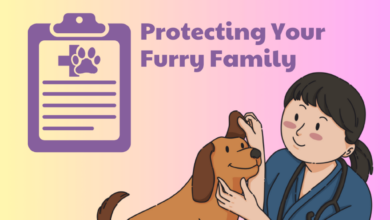Is Pet Health Insurance Worth It for Your Dog?
In today’s modern world, our beloved canine companions deserve the best possible care. With rising veterinary costs, pet health insurance has emerged as an invaluable safety net for dog owners. Our furry friends can face unexpected illnesses, accidents, or chronic conditions, and navigating these medical expenses without insurance can be daunting. This article delves into the benefits of pet health insurance, providing practical guidance to help you make informed decisions about safeguarding the well-being of your cherished dog.
Contents
- 1 1. Understand Your Dog’s Breed and Health Risks
- 2 2. Consider Your Dog’s Age and Lifestyle
- 3 3. Research Different Insurance Plans
- 4 4. Read Reviews and Ask for Referrals
- 5 5. Determine Your Budget
- 6 6. Look for Plans with Comprehensive Coverage
- 7 7. Ensure the Plan Covers Pre-Existing Conditions
- 8 8. Choose a Plan with a Reasonable Deductible
- 9 9. Check the Reimbursement Rate
- 10 10. Consider the Waiting Period
- 11 What to Look for in Pet Health Insurance
- 11.1 1. Coverage Options
- 11.2 2. Deductibles and Co-pays
- 11.3 3. Annual Limits and Payout Caps
- 11.4 4. Pre-existing Conditions
- 11.5 5. Waiting Periods
- 11.6 6. Breed Restrictions
- 11.7 7. Network of Providers
- 11.8 8. Customer Service and Claim Handling
- 11.9 9. Premiums and Discounts
- 11.10 10. Financial Stability of the Insurer
- 12 Choosing the Right Pet Health Insurance Policy for Your Dog
- 13 Thanks for Reading!
1. Understand Your Dog’s Breed and Health Risks
Every dog breed carries unique predispositions to certain health conditions. For example, Golden Retrievers are prone to hip dysplasia, while Bulldogs often develop respiratory issues. Knowing your dog’s breed can help you tailor an insurance plan that specifically addresses their potential health concerns.
2. Consider Your Dog’s Age and Lifestyle
As your dog ages, their health needs may change. Senior dogs are more likely to develop chronic conditions like arthritis or cancer. If your dog is particularly active or adventurous, they may face a higher risk of injuries or accidents. Taking into account your dog’s age and lifestyle will ensure you choose a plan that covers their specific needs.
3. Research Different Insurance Plans
There are numerous pet health insurance providers on the market, each offering a range of plans with varying coverage and premiums. Compare plans thoroughly, considering factors such as the annual coverage limit, deductible, and reimbursement rate to find the plan that best suits your financial situation and provides the protection your dog needs.
4. Read Reviews and Ask for Referrals
Before committing to a plan, take the time to read reviews and ask for recommendations from fellow pet owners. This can provide valuable insights into the customer service, claim processing efficiency, and overall experience with specific providers.
5. Determine Your Budget
Pet health insurance premiums vary depending on the factors mentioned above. It’s crucial to set a realistic budget before exploring insurance options to ensure you can afford the ongoing costs. Consider your monthly income and other financial obligations to determine how much you can allocate to pet insurance.
6. Look for Plans with Comprehensive Coverage
The best pet health insurance plans cover a wide range of veterinary expenses, including unexpected emergencies, routine care, and preventive treatments. Check the plan’s exclusions and limitations carefully to ensure it meets your dog’s potential healthcare needs.
7. Ensure the Plan Covers Pre-Existing Conditions
Some insurance plans may exclude coverage for pre-existing conditions. If your dog has any known health issues, it’s important to choose a plan that offers coverage for these conditions to avoid financial burdens in the future.
8. Choose a Plan with a Reasonable Deductible
The deductible is the amount you must pay out-of-pocket before the insurance kicks in. Higher deductibles typically result in lower premiums, but may not be suitable for dogs with frequent health issues. Choosing a deductible that balances financial responsibility with necessary coverage is crucial.
9. Check the Reimbursement Rate
The reimbursement rate refers to the percentage of covered expenses that the insurance plan will reimburse you for. A higher reimbursement rate will reduce the amount you pay out-of-pocket, but may come with a higher premium.
10. Consider the Waiting Period
Most pet health insurance plans have a waiting period before coverage kicks in, often ranging from 14 to 30 days. This means you may have to pay for initial veterinary expenses before the insurance coverage begins. Choose a plan with a waiting period that aligns with your dog’s health needs and your financial situation.
What to Look for in Pet Health Insurance
When shopping for pet health insurance, there are several key factors to consider:
1. Coverage Options
Determine the scope of coverage you need. Plans typically offer coverage for accidents and illnesses, but some also cover wellness care, such as vaccinations and spaying/neutering.
2. Deductibles and Co-pays
Understand the financial commitments involved. Deductibles must be met before coverage kicks in, while co-pays are a percentage of covered expenses that you pay.
3. Annual Limits and Payout Caps
Check the maximum amount the insurance company will pay out per year and over the lifetime of your pet.
4. Pre-existing Conditions
Confirm if the plan covers pre-existing conditions and any exclusions or waiting periods.
5. Waiting Periods
Note any waiting periods before coverage begins for certain conditions, such as accidents or illnesses.
6. Breed Restrictions
Some breeds are considered higher risk and may face higher premiums or coverage exclusions.
7. Network of Providers
Verify if the insurance company has a network of participating providers or if you can see any veterinarian.
8. Customer Service and Claim Handling
Inquire about the company’s reputation for customer service and the ease of filing and resolving claims.
9. Premiums and Discounts
Consider the monthly premiums and any discounts available for factors like age or multiple pets.
10. Financial Stability of the Insurer
Ensure that the insurance company is financially stable to pay out claims.
Choosing the Right Pet Health Insurance Policy for Your Dog
Deciding on the right pet health insurance policy for your dog is crucial to ensure their well-being and minimize your out-of-pocket expenses. Here are five key factors to consider:
Coverage Options
Pet health insurance policies typically offer various levels of coverage, each with different premiums and deductibles. The most common options include:
- Accident-Only Coverage: Covers injuries caused by accidents, such as falls or car accidents.
- Illness Coverage: Covers medical expenses related to illnesses, such as cancer or diabetes.
- Accident and Illness Coverage: Combines the two previous options, providing comprehensive coverage for both accidents and illnesses.
The type of coverage you choose will depend on your dog’s age, health history, and activity level.
Deductibles and Coinsurance
Deductible: A set amount you pay before the insurance coverage kicks in. Lower deductibles typically result in higher premiums.
Coinsurance: The percentage of covered medical expenses you pay after meeting the deductible. Common coinsurance rates are 10%, 20%, and 30%.
Choosing the right deductible and coinsurance combination can significantly impact your out-of-pocket costs.
Maximum Coverage Limits
Most pet health insurance policies have maximum coverage limits, which set an upper limit on the amount the insurer will pay for covered expenses during a specific period (usually a year). These limits can range from $2,000 to unlimited.
It’s important to consider your dog’s potential medical needs and choose a policy with an adequate coverage limit.
Pre-Existing Conditions
Pre-existing conditions are medical issues that existed before the insurance policy was purchased. Many pet health insurance policies exclude coverage for pre-existing conditions, so it’s important to disclose your dog’s health history accurately.
Some policies may offer riders or endorsements that cover certain pre-existing conditions for an additional premium.
Customer Service and Reputation
The quality of customer service provided by the insurance company is crucial in ensuring a smooth claims process and resolving any issues promptly. Look for companies with positive customer reviews and a reputation for being responsive and reliable.
Thanks for Reading!
Well, that’s all for now on pet health insurance for dogs. We hope you found this article helpful. Let us know if you have any questions. If you are considering getting pet health insurance for your dog, we encourage you to do your research and compare different plans to find the one that best fits your needs and budget. Thanks again for reading, and we hope to see you again soon!








